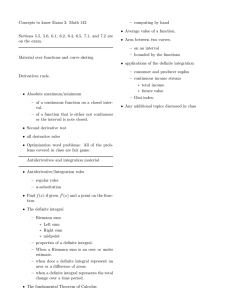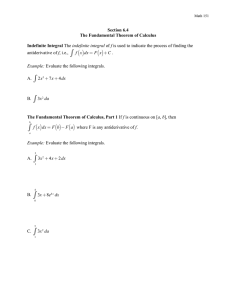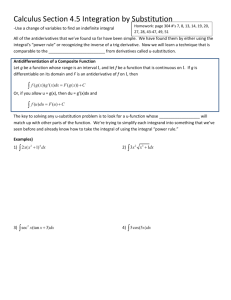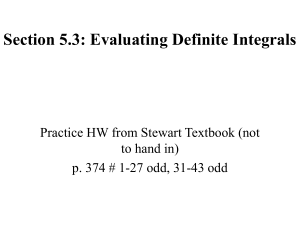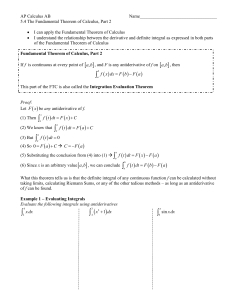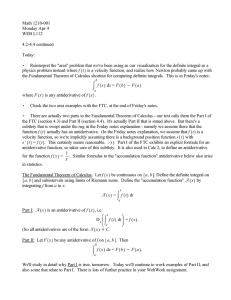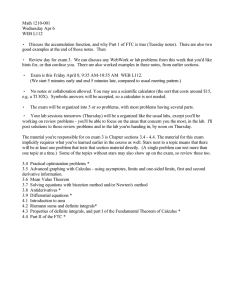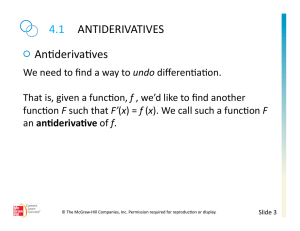MA 126 Review for Exam 1 February 2015
advertisement
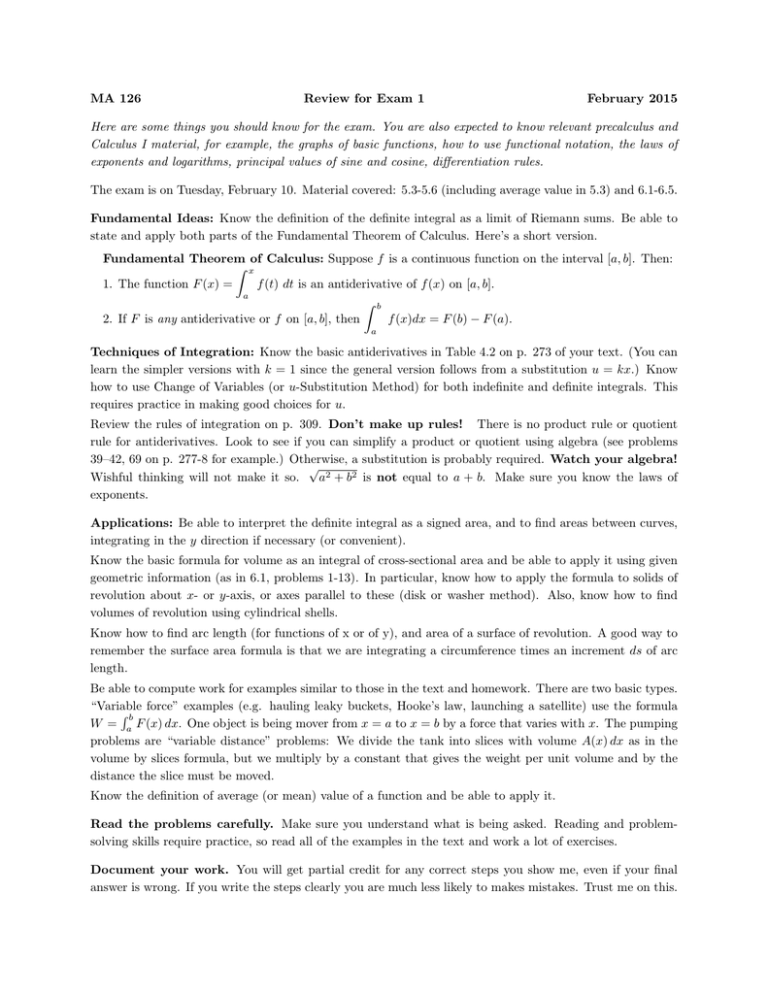
MA 126 Review for Exam 1 February 2015 Here are some things you should know for the exam. You are also expected to know relevant precalculus and Calculus I material, for example, the graphs of basic functions, how to use functional notation, the laws of exponents and logarithms, principal values of sine and cosine, differentiation rules. The exam is on Tuesday, February 10. Material covered: 5.3-5.6 (including average value in 5.3) and 6.1-6.5. Fundamental Ideas: Know the definition of the definite integral as a limit of Riemann sums. Be able to state and apply both parts of the Fundamental Theorem of Calculus. Here’s a short version. Fundamental Theorem of Calculus: Suppose f is a continuous function on the interval [a, b]. Then: Z x 1. The function F (x) = f (t) dt is an antiderivative of f (x) on [a, b]. a Z b 2. If F is any antiderivative or f on [a, b], then f (x)dx = F (b) − F (a). a Techniques of Integration: Know the basic antiderivatives in Table 4.2 on p. 273 of your text. (You can learn the simpler versions with k = 1 since the general version follows from a substitution u = kx.) Know how to use Change of Variables (or u-Substitution Method) for both indefinite and definite integrals. This requires practice in making good choices for u. Review the rules of integration on p. 309. Don’t make up rules! There is no product rule or quotient rule for antiderivatives. Look to see if you can simplify a product or quotient using algebra (see problems 39–42, 69 on p. 277-8 for example.) Otherwise, a substitution is probably required. Watch your algebra! √ Wishful thinking will not make it so. a2 + b2 is not equal to a + b. Make sure you know the laws of exponents. Applications: Be able to interpret the definite integral as a signed area, and to find areas between curves, integrating in the y direction if necessary (or convenient). Know the basic formula for volume as an integral of cross-sectional area and be able to apply it using given geometric information (as in 6.1, problems 1-13). In particular, know how to apply the formula to solids of revolution about x- or y-axis, or axes parallel to these (disk or washer method). Also, know how to find volumes of revolution using cylindrical shells. Know how to find arc length (for functions of x or of y), and area of a surface of revolution. A good way to remember the surface area formula is that we are integrating a circumference times an increment ds of arc length. Be able to compute work for examples similar to those in the text and homework. There are two basic types. “Variable force” examples (e.g. hauling leaky buckets, Hooke’s law, launching a satellite) use the formula Rb W = a F (x) dx. One object is being mover from x = a to x = b by a force that varies with x. The pumping problems are “variable distance” problems: We divide the tank into slices with volume A(x) dx as in the volume by slices formula, but we multiply by a constant that gives the weight per unit volume and by the distance the slice must be moved. Know the definition of average (or mean) value of a function and be able to apply it. Read the problems carefully. Make sure you understand what is being asked. Reading and problemsolving skills require practice, so read all of the examples in the text and work a lot of exercises. Document your work. You will get partial credit for any correct steps you show me, even if your final answer is wrong. If you write the steps clearly you are much less likely to makes mistakes. Trust me on this.


